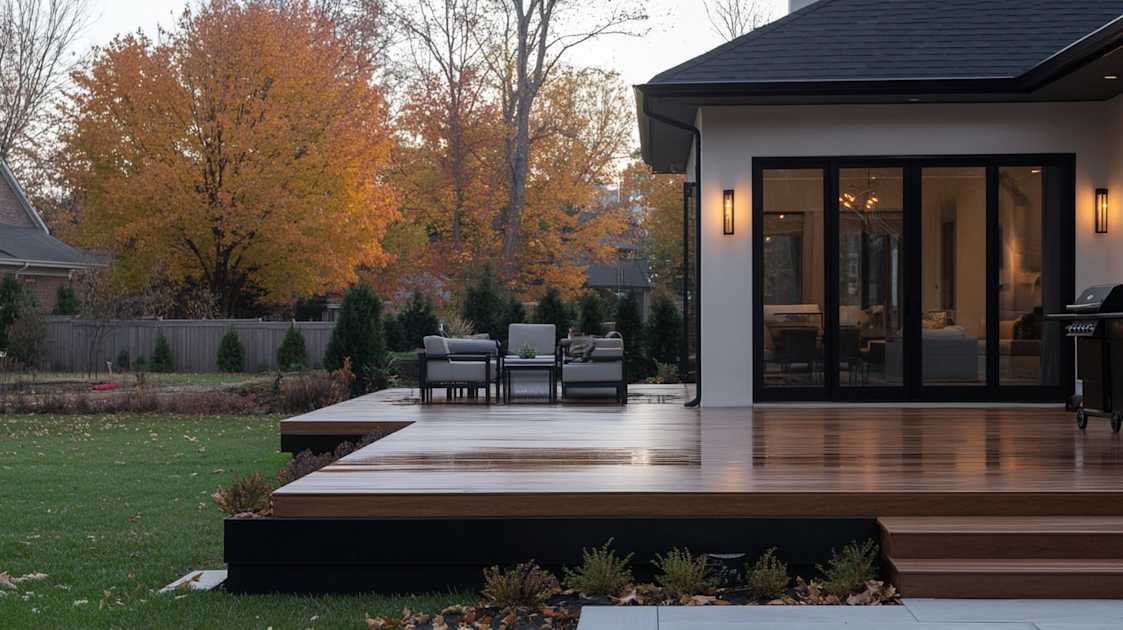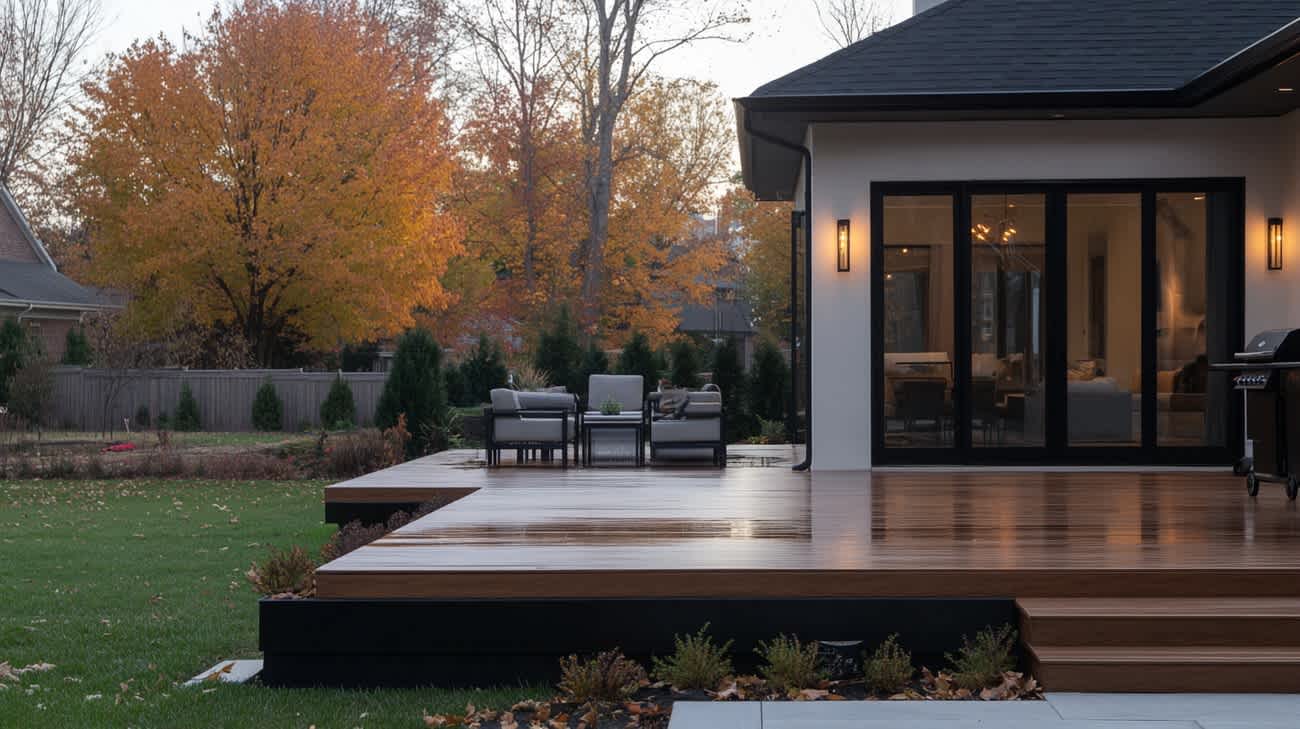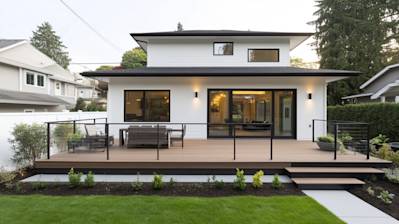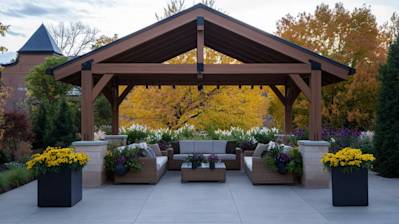Everyone loves a good deck. It’s a place that naturally invites relaxation and openness, engagement with the great outdoors, and bountiful opportunities for entertaining. But to maintain that timeless appeal, effective deck waterproofing is key. It protects your outdoor space from harsh weather conditions, rotting, and overall decay. And if you’re not sure where to start, keep reading. This comprehensive guide is designed to walk you through every significant aspect of deck waterproofing, from materials to the process to yearly maintenance.
Understanding the Importance of Deck Waterproofing
Decks, especially those made from wood, are exceedingly susceptible to water damage. Rain, snow, and even regular dew can lead to mold growth, compromise structural integrity, and deteriorate the deck's look. Waterproofing is the solution to these issues, helping to:
- Extend the lifespan of your deck
- Prevent water damage and rotting
- Maintain its aesthetic appeal
- Boost your property’s overall value
Material Considerations for Waterproof Deck Coatings
When it comes to applying a waterproof coating to your deck, the material can significantly influence both the process and the results. Here, we’ll explore common materials for deck construction and their compatibility with different waterproofing solutions.
Natural Wood Decks
Natural wood decks exude unparalleled charm, but they are also highly susceptible to water-induced decay. Suitable waterproofing options for these are:
- Sealers: Clear sealers penetrate deep into the wood to block moisture, preserving the wood's natural look.
- Stains: Available in various opacities, stains add color to the wood while offering added protection from UV rays.
Composite Wood Decks
Made from wood fibers and plastic, composite decks are popular for their longevity. Since these decks are already pretty resistant to rot, a simple water-resistant coating or sealant should suffice for waterproofing.
Vinyl And Aluminum Decks
With superior water-resistance, decks made from vinyl or aluminum might not require as much maintenance. Still, applying a waterproof sealant provides an added layer of protection for these materials.
The Deck Waterproofing Process: A Step-By-Step Guide
To ensure maximum effectiveness, it’s essential to approach waterproofing your deck with a clear process in mind. Here is a general sequence of steps for successful deck waterproofing.
Step 1: Choosing the Right Time
Weather conditions significantly influence the outcome of the waterproofing process. Ideally, choose a day with clear skies and temperatures between 50°F to 95°F.
Step 2: Cleaning Your Deck
Before applying any waterproofing product, ensure the deck is clean and dry. You can use deck cleaning solutions and a brush for stubborn dirt and mildew.
Step 3: Sanding
To ensure efficient penetration of the waterproofing agent, lightly sand the deck. This step is especially important for older decks that might have bumpy or rough surfaces.
Step 4: Applying the Waterproofing Product
Once the deck is clean and dry, you can apply the chosen product. Be sure to strictly follow the manufacturer's instructions for optimum results.
Step 5: Allow Time for Drying
The drying time might vary with the product, but generally, it’s wise to wait 1-2 days before using the deck.
Make Waterproofing a Regular Maintenance Task
Deck waterproofing isn't a once-and-done task — it is a vital part of regular deck maintenance. Depending on the construction material and weather exposure, you should ideally reapply a waterproof coating every 1-2 years.
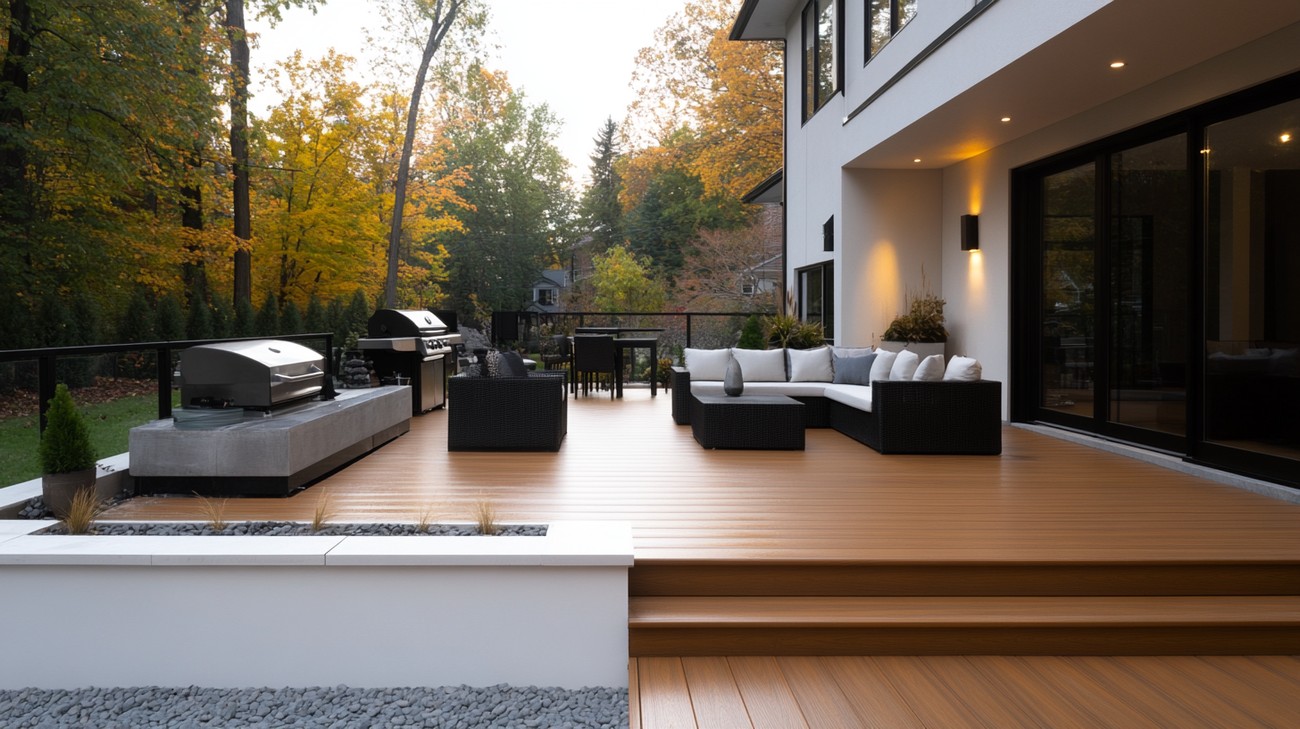
Frequently Asked Questions about Deck Waterproofing
How often should I waterproof my deck?
The frequency of deck waterproofing greatly depends on the local climate and the specific material of your deck. In general, decks should be waterproofed every two to three years. However, you may need to do it more frequently if you live in an area with heavy rain or snow.
How can I tell if my deck needs waterproofing?
There are several signs your deck may need waterproofing. If you notice the wood is beginning to swell, warp, or show signs of water damage, it's time to consider waterproofing. Another simple test you can do is sprinkle some water onto the deck surface. If the water beads up, the waterproofing is working. If it soaks into the wood, it's time to reapply a waterproof coating.
Is it better to stain or waterproof a deck?
The answer to this largely depends on your desired aesthetics and protection level. Staining a deck can provide some level of water resistance, add colour, and highlight the features of the wood grain. Waterproofing on the other hand, provides a higher level of water resistance. Some homeowners choose to do both: apply a stain to achieve the desired look and then seal it with a waterproof coating for protection.
Can I waterproof my deck myself?
Absolutely! Many homeowners choose to waterproof their own decks. There are many products available for DIY deck waterproofing. However, it is important to ensure proper application. Improper technique could end up leaving your deck vulnerable to water damage.
What types of deck waterproofing solutions are available?
There are various products for deck waterproofing which include waterproofer plus sealers, oil-based stains, water-based stains and clear wood preservatives. All of these products can be applied with a brush or sprayer and they each have their own unique benefits and advantages.
How long does it take for a waterproofing solution to dry?
Usually, a deck waterproofing solution dries within 24 to 48 hours under ideal conditions — that is, when applied in moderate temperatures with low humidity. However, the exact drying time may vary depending on the specific product used, so it's best to refer to the manufacturer's instructions.
Is deck waterproofing environmentally friendly?
While not all deck waterproofing solutions are created equal in terms of environmental impact, many of today’s options are considerably eco-friendlier than those of the past. Today, you can find water-based sealers that are low in volatile organic compounds (VOCs) and therefore less harmful to the environment.
When is the best time to waterproof a deck?
The best time to waterproof a deck is generally in the late spring or early summer when the temperatures are moderate and there’s little rainfall. This gives the waterproofing solution optimal conditions to dry and cure properly.

Pros of Deck Waterproofing
Enhanced Durability
Deck waterproofing greatly enhances the overall durability of your deck. The coating provides a protective layer that helps to prevent water damage, which is particularly important if your deck is made of wood. Water can cause serious damage to wooden structures, including warping, rot, and mildew growth. By waterproofing your deck, you’re protecting it from these damaging factors, considerably enhancing its lifespan and structural integrity.
Helps to Avoid Costly Repairs
Without proper waterproofing, decks can be susceptible to water damage, which ultimately may result in the need for expensive repairs. In worst-case scenarios, the entire deck may need to be replaced. Hence, waterproofing your deck can actually save you money in the long run by helping to avoid these costly repairs or replacements.
Rising Property Value
A well-maintained and waterproofed deck can significantly boost the value of your property. It is particularly beneficial if you're considering selling your property as potential buyers are usually willing to pay more for homes with decks that are in good condition. So, deck waterproofing can be seen as a valuable investment towards your property value.
Enhanced Aesthetic Appeal
Waterproofing can revitalize the appearance of your deck, giving it a sleek, high-gloss finish, depending on the product used. There is a wide variety of stains and finishes available, and you can choose one that complements the aesthetic of your home and outdoor space.
Easy Cleaning
Waterproofed decks are much easier to clean and maintain as the waterproof layer prevents dirt, debris, and water from penetrating the surface of the deck. A simple sweep or rinse with a hose is often enough to keep your deck looking its best.
Cons of Deck Waterproofing
Initial Cost
While deck waterproofing can save you money in the long term by avoiding costly repairs, the upfront cost might be substantial depending on the size of your deck and the waterproofing method chosen. In some cases, professional installation may be required, which adds to the cost.
Regular Maintenances
Over time, the waterproofing layer may wear off due to harsh weather conditions, such as extreme temperatures, heavy rains, or snow. This means your deck will require regular maintenance and refinishing, every two to five years, again, depending on the climate and the quality of the original waterproofing job.
Time Consuming Process
Waterproofing your deck is not a speedy process. It involves cleaning the deck, drying it, and then applying the waterproofing product. You may also need to reapply the product over a couple of days to ensure it soaks into the wood correctly. Furthermore, you need to account for drying time before the deck can be used again. So it requires a bit of planning.
Poisoning Risk
Some waterproofing oils, paints and stains contain volatile organic compounds (VOCs) which can be harmful or even poisonous if ingested or inhaled in large quantities. This means you'll have to exercise extra care during application, especially if children, pets or wildlife are around.
Possible Aesthetic Deterioration
If not applied correctly, waterproofing product can peel and crack, causing the deck to look aesthetically unpleasant. In some cases, the product may even discolor the wood. This means you’ll need to be mindful while choosing the product and take care while applying it.
Slip Risk
Some waterproofing products can make the deck slippery, particularly when wet. This poses a hazard, especially for children, elderly people, or those with mobility issues. It's important to check the product description and reviews before purchasing to ensure it does not have such an unintended side effect.

Myths and Misconceptions About Deck Waterproofing
Deck waterproofing is a crucial process that protects your deck against water damage resulting from exposure to rain, snow, and other elements. However, a variety of myths and misconceptions are associated with the process, leading to confusion and sometimes improper deck care. This section will debunk some of these myths and misconceptions to help you understand the truth about deck waterproofing.
Myth 1: All Decks Need Waterproofing
Reality: Some Decks Don't Need Waterproofing
All decks are not the same and they do not all require waterproofing. For instance, decks made from composite materials or synthetic wood are designed to be water-resistant and therefore don't require additional waterproofing. On the other hand, natural wood decks are highly susceptible to water damage and need regular waterproofing to prevent rotting, warping, and other forms of damage.
Myth 2: Deck Waterproofing Lasts Forever
Reality: Deck Waterproofing Requires Regular Maintenance
This is perhaps one of the most common misconceptions about deck waterproofing. Many people believe that once you've waterproofed your deck, it's protected forever. The truth is, even the best waterproofing treatments will gradually wear off due to weather exposure and regular use of the deck. Typically, experts recommend reapplying a waterproof coating every 2-3 years to maintain its effectiveness.
Myth 3: Sealants and Waterproofing are the Same Thing
Reality: Sealants and Waterproof Coatings Serve Different Purposes
Many homeowners confuse sealing and waterproofing, using these terms interchangeably, but they are not the same thing. Sealants are designed to help protect wood from elements such as sunlight and moisture, but they don't provide the same level of water protection as waterproof coatings. Sealants are more appropriate for reducing weather-related discoloration and minor water damage. In contrast, waterproof coatings form a barrier that completely prevents water from penetrating the wood, offering much more protection against substantial water damage.
Myth 4: Any Waterproofing Product Will Work for any Deck
Reality: The effectiveness of Waterproofing Products Varies by Deck Material and Condition
Not all waterproofing products are equally effective on every type of deck material. For example, some products are formulated specifically for use on certain types of wood and may not work well on others. Also, the deck's condition can significantly impact the effectiveness of the waterproofing treatment. Decks with more damage or decay might require more extensive preparation or a different kind of waterproofing product than a newer or well-maintained deck.
Myth 5: Waterproofing a Deck is a Simple DIY project
Reality: Deck Waterproofing Can Be A Complex Process Best Left To Professionals
While there are numerous DIY deck waterproofing products on the market, the process can be more complex than people realize. Proper preparation is critical and may involve cleaning, sanding, and repairing any damage. Choosing the right type of waterproofing product for your specific deck material and applying it correctly are also vital to getting good results. A professional deck waterproofing service has the knowledge and experience to ensure the job is done correctly and offers long-term protection for your deck.
Myth 6: Waterproofing Products Are All The Same
Reality: There is a Wide Array of Waterproofing Products with Different Features
Many people mistakenly believe that all deck waterproofing products are the same. In reality, they can vary significantly in their ingredients, performance, lifespan, and the level of protection they offer. Some products might be better equipped to handle exposure to intense sun, while others might provide better protection against rain or snow. Therefore, it's important to thoroughly research and choose the product that is most suited to your deck's particular needs and your climate.
Myth 7: Waterproofing Makes a Deck Completely Water-Resistant
Reality: Waterproofing Protects Against Water Damage But Does Not Make the Deck 100% Water-Resistant
Waterproofing plays an essential role in protecting the deck's material from water damage, but it does not make a deck completely impervious to water. This is particularly true if the coating has not been appropriately maintained or if the deck has structural issues that allow water to pool or infiltrate.
In conclusion, having a clear understanding of these misconceptions can prevent you from making mistakes when waterproofing your deck. Remember to always consult professionals or thorough guides when you have doubts about the process. With proper care and maintenance, your deck can remain beautiful and strong for many years.
Summary
Deck waterproofing is integral to the longevity and durability of your outdoor living space. It dives deep to protect the wood from harsh elements like rain, snow, and UV rays, preventing rot, splintering, and discoloration. After all, durability is as important as the aesthetics when it comes to decks. Thus, spending a day or two every couple of years for thorough deck waterproofing will ensure you have a beautiful, functional space for years to come.
The option of DIY deck waterproofing can help homeowners save costs. It involves cleaning the deck, applying the waterproofing solution, and allowing it to dry completely. The process might seem straightforward, but remember it needs a good understanding of the product, appropriate weather conditions, and sufficient time. On the other hand, you can always hire professionals to do the job for perfect, long-lasting results.
The choices available in deck waterproofing solutions are plenty. It starts with cleaners and stains reaching to sealers and finishes. Each product has its own benefits and specific instructions for use. It's crucial to choose the right product considering the type of wood, age of the deck, and its exposure to weather. The right method of deck waterproofing will retain the natural beauty of the wood and make sure your deck remains a welcoming place to relax and entertain.
About US Quality Construction of Columbus
US Quality Construction of Columbus, located in the heart of Columbus, OH, is committed to delivering top-notch construction services tailored to meet your specific needs. From construction management to designing and building, our skilled team is focused on ensuring customer satisfaction. Our rich experience, combined with our dedication to quality, make us a go-to choice for those seeking a reliable construction company. Whether it's a comprehensive project or a small renovation, we treat every task with the same level of precision and attention to detail. At US Quality Construction of Columbus, we believe in building more than just structures – we strive to build lasting relationships with our clients.
Tags: outdoor, maintenance, protection,


